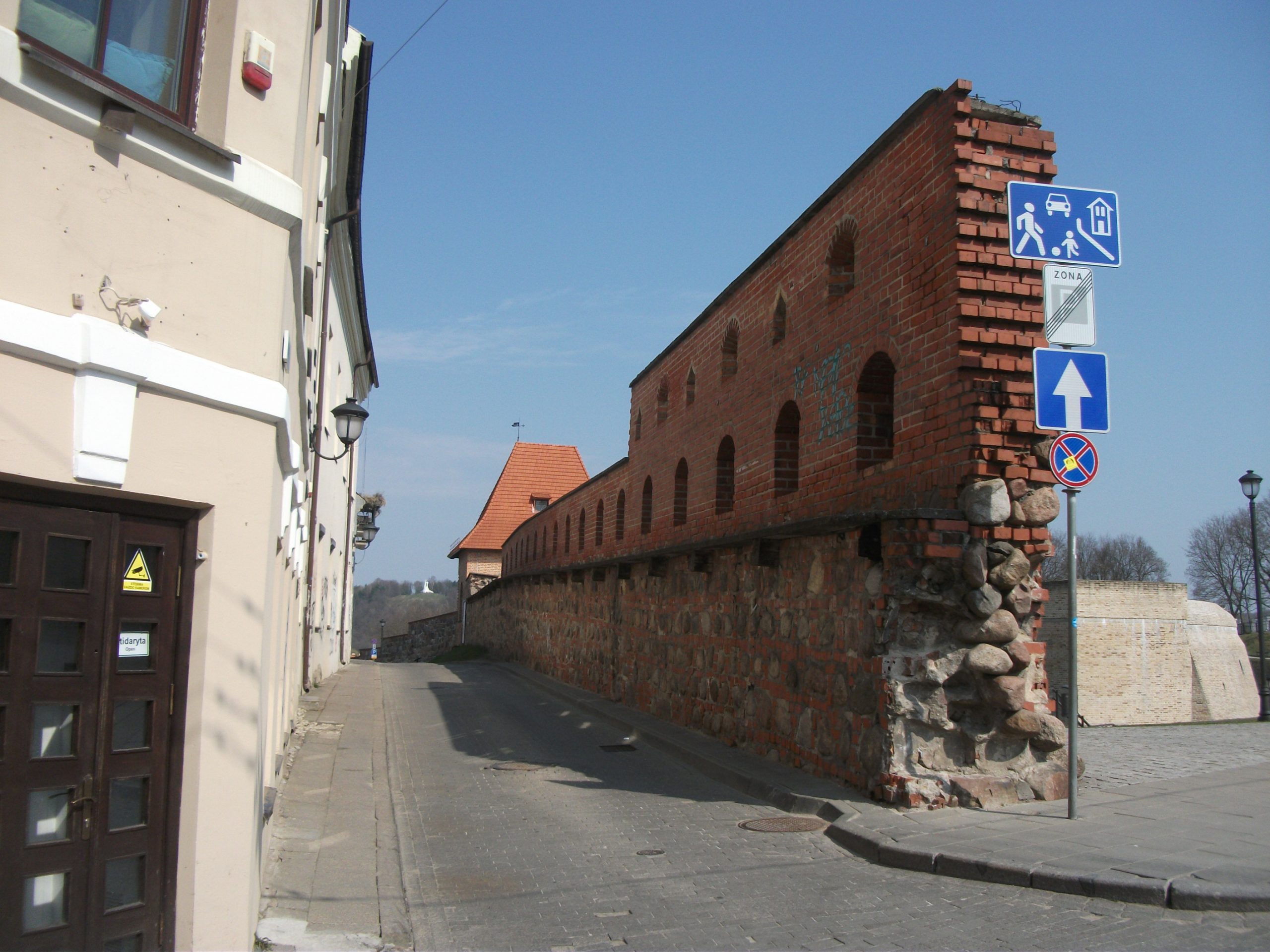Views: 281
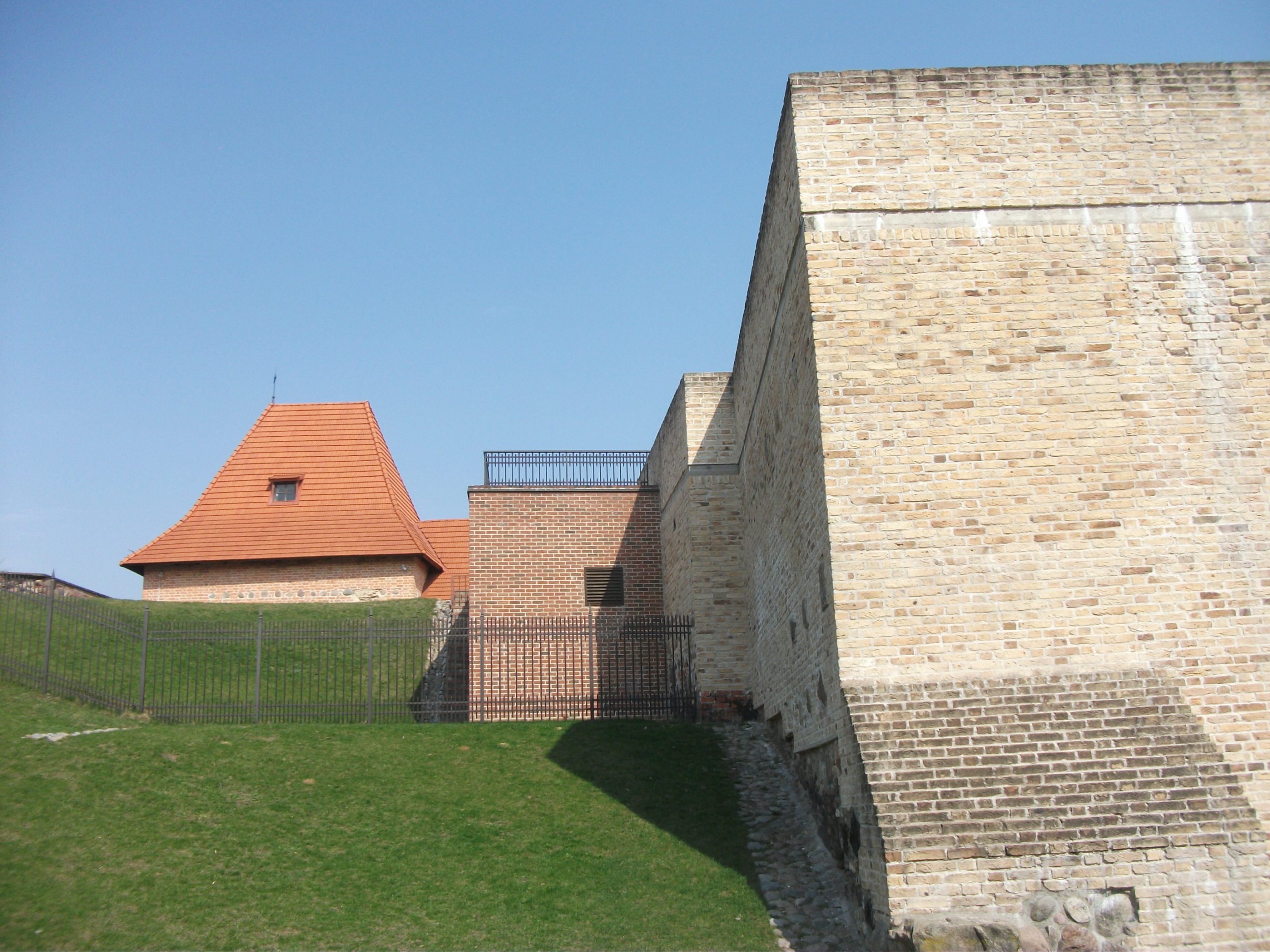 The fortifications at the top of Tower St. have been restored and today form the Bastion Museum of the original early 17th century Barbecan
The fortifications at the top of Tower St. have been restored and today form the Bastion Museum of the original early 17th century Barbecan
 A view from Tower St. on St. Casimir church (early 17th century Baroque style)
A view from Tower St. on St. Casimir church (early 17th century Baroque style)
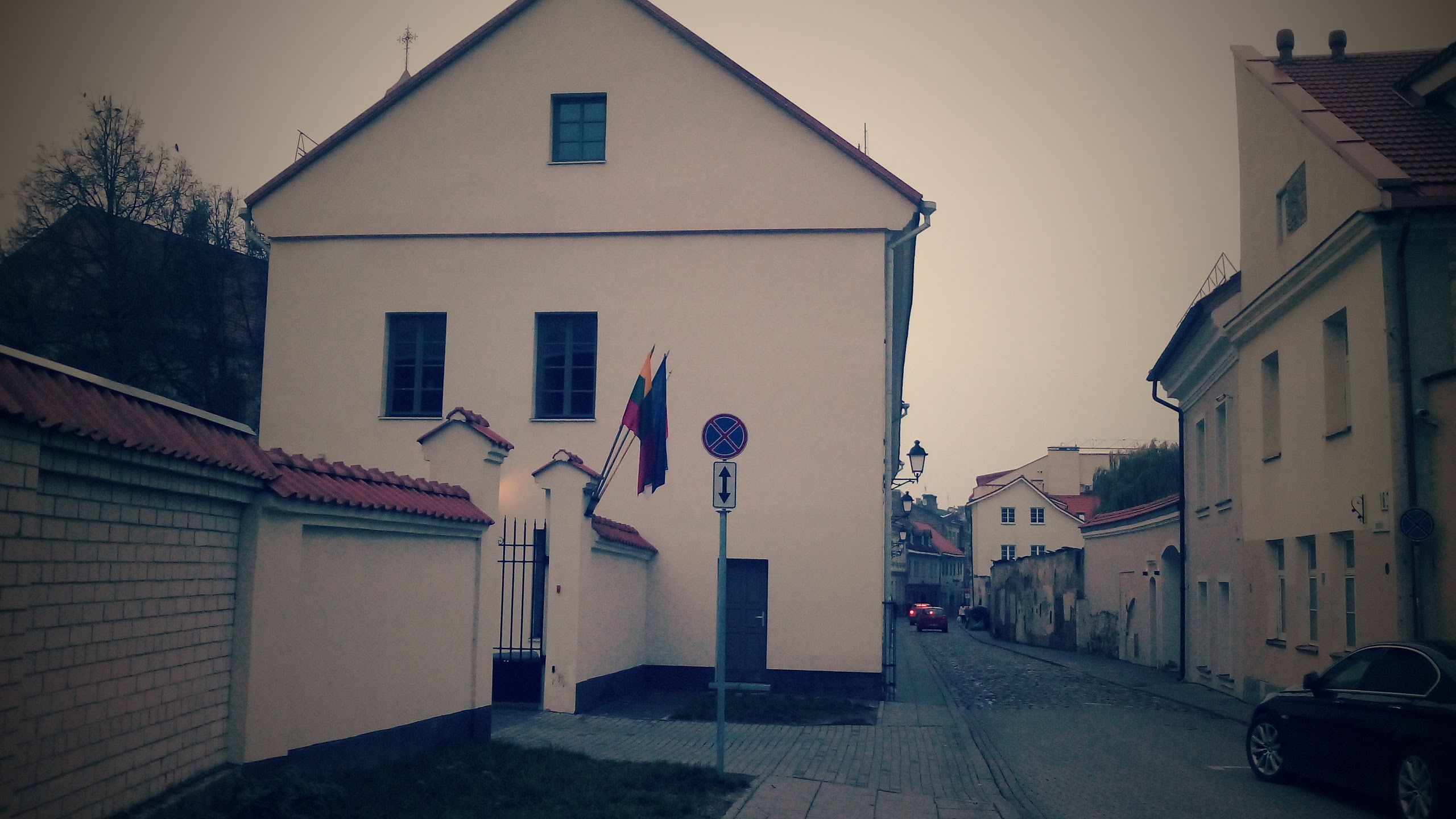 Tower St. with the building of the former Augustine monastery (left)
Tower St. with the building of the former Augustine monastery (left)
All photos are copyrighted by Vladislav B. Sotirovic
© Vladislav B. Sotirovic 2020
RELATED POSTS
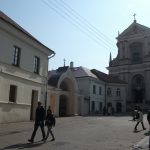
It was built from 1633 to 1654 under the patronage of the Vice-Chancellor of the Grand Duchy of Lithuania, Stephen Pac. Most probably the exterior was designed by Italian Constantino Tencalla. The exterior of the Church of St. Theresa is designed according to the models of Roman architecture: it is noble and harmonious, built along with the vertical principle with volutes and side obelisksThe St. Theresa Church (left) is located at Dawn St. nearby the Gate of Dawn (at the top) that is famous for its miraculous image of the Mother of Mercy (or Mary of Vilnius)The chapel is built by the Barefoot Carmelite monks for the miraculous picture of Mary of Vilnius in 1671. The St. Theresa Church was built with a large Barefoot Carmelite Monastery, established near Vilnius' defensive wall All photos are copyrighted by Vladislav B. Sotirovic© Vladislav B. Sotirovic 2018
Continue Reading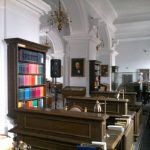
The architect whose name is most closely associated with Vilnius University is the Jesuit Tomas Zhebrauskas who founded (together with Elžbieta Oginskaitė-Puzinienė, the daughter of the famous manor owner Mykolas Oginskis) and designed the observatory, in 1753. The White Hall belongs to the observatory The astronomical observatory of Vilnius University is one of the oldest in Europe and the oldest in the former Polish-Lithuanian Commonwealth. It was famous in Europe for its astronomers and their works until it was closed after the fire of 1876The White Hall today is, in fact, a reading room of the Library of Vilnius UniversityAll photos are copyrighted by Vladislav B. Sotirovic© Vladislav B. Sotirovic 2023
Continue Reading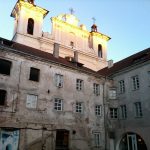
In Old Town in Vilnius, at the Church of the Holy Spirit, on St. Ignatius St., a Dominican monastery was established in 1501At the time of Napoleonic Wars (in 1812) the Dominican monastery of the Church of the Holy Spirit was used by the French army as a hospitalThe monastery was converted into a prison by the Russian authorities in 1807. Corridors are decorated by frescoes from the 18th centuryAll photos are copyrighted by Vladislav B. Sotirovic© Vladislav B. Sotirovic 2021
Continue Reading
Wonderful panoramic view can be seen from the roof (platform) of Gediminas Tower (Upper Castle Tower)Despite wars and destructions, the architectural ensemble of Vilnius Old Town remains unique. Baroque domes and towers of Vilnius Old Town coexist with an irregular medieval city plan Vilnius Old Town is lacking German or Scandinavian features, rather reminiscent of Prague or Rome, Vilnius differs greatly from the other Baltic capitalsAll photos are copyrighted by Vladislav B. Sotirovic© Vladislav B. Sotirovic 2019
Continue Reading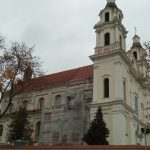
The church is an elegant late Baroque monument built-in 1702-1730. It is made even more attractive by an asymmetrical monastery ensemble in 1713-1730The towers date from the mid-18th century. They end in rococo domes with lanterns Both the church and the monastery belonged to the Jesuit Order. The monastery was intended for the Jesuit monks with 10 years of service experience seeking to become professed Jesiuts, i.e., to make the last ceremonial vowes All photos are copyrighted by Vladislav B. Sotirovic© Vladislav B. Sotirovic 2019
Continue Reading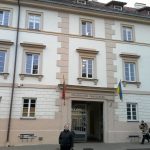
Hostel Courtyard of the Old Campus of the Vilnius UniversityIn the late 19th century all houses of the courtyard were reconstructed and in the early 21st century water supply and sewerage systems were installed. Apartments were rented in those housesInterior of the present-day Faculty of Philosophy. After the reconstruction was completed in the spring of 2005, the Faculty of Philosophy was relocated hereAll photos are copyrighted by Vladislav B. Sotirovic© Vladislav B. Sotirovic 2023
Continue Reading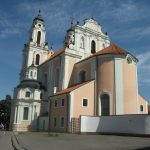
It was built by the Benedictine Sisters near their convent. It acquired its present-day appearance after a great fire in Vilnius in 1737. The church has a rich interior decorated with stucco mouldings and artificial marble. Today the church is restored and adapted for concerts. It also hosts the International Christopher Summer Music FestivalFlanking the church on Vilniaus Street, a particularly elegant Chapel of Providence was erected in 1641 and rebuilt in 1746The single-nave church has 9 magnificent Late Baroque altars and a pulpitAll photos are copyrighted by Vladislav B. Sotirovic© Vladislav B. Sotirovic 2018
Continue Reading
One of Baroque gates of the Sapieha ParkAmong the surviving details of the palace are Baroque façades with stucco relief works by Pietro Perti and three Baroque gates. The park is the only one in Vilnius Vilnius with features of a regular Baroque park The palace and the gates were decorated with sculptures and frescoes created by masters who had worked in the Church of St. Peter and St. Paul and St. Casimir's Chapel of the Cathedral Basilica in VilniusAll photos are copyrighted by Vladislav B. Sotirovic© Vladislav B. Sotirovic 2019
Continue Reading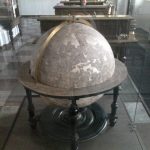
Vilnius University was the first observatory center in Eastern Europe and the 4th in the worldWhite Hall now houses unique astronomical instruments and a reading roomThe narrow staircase leads to the observatory tower, which reveals a panorama of the Vilnius Old TownAll photos are copyrighted by Vladislav B. Sotirovic© Vladislav B. Sotirovic 2023
Continue Reading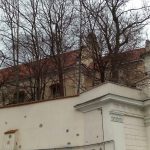
The church was originally Gothic but in 1750-1755 it was restored according to design by Franz Ignatius Hoffer and acquired some late Baroque and Rococo featuresNearby the church building stand the 17th-18th-century buildings of the Carmelite Monastery which had a rich archive and library. A study centre opereted there. In 1797-1944 it housed the Ecclesiastical Seminary Today the buildings are used by the Centre for Book Research and Libraries, and the church is closed to the publicAll photos are copyrighted by Vladislav B. Sotirovic© Vladislav B. Sotirovic 2020
Continue Reading
The organ, made by famous German master Adam G. Casparini in 1776, is one of the most valuable cultural monuments of Lithuania. The organ itself is the only surviving original 18th-century instrument in LithuaniaThe church has many Baroque frescoes. In the cupola, there is a multi-figural composition "Apotheosis of the Holy Spirit" (neo-Baroque, 19th century)The altars and the pulpit are lavishly decorated with round and relief sculptures and ornamentation All photos are copyrighted by Vladislav B. Sotirovic© Vladislav B. Sotirovic 2018
Continue Reading
This short (250 m), narrow and crooked street with Baroque and Classical houses is surrounded by curving, walls, ancient façades and typical 17th and 18th-century courtyardsIn Bernardinų St. in the house No. 11 a famous Polish-Lithuanian poet Adam Mickiewicz lived in April-June 1822. His apartment is located on the left side of the ground floor which is today transformed into the museumBernardinų St. connects the ensemble of the Churches of St. Anne and Bernardines with Pilies St. In 16th century, it was a section of a road connecting the complex of royal castles with the Bernardinų Gate of the cuty defensive wall All photos are copyrighted by Vladislav B. Sotirovic© Vladislav B. Sotirovic 2020
Continue Reading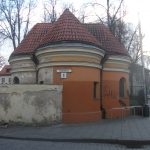
The small garden between the church and the street used to be a cemetery. It is still occupied by a mausoleum built in 1708 for the Suzin's familyThe Suzin's family chapel was functioning as a souvenir shop during the Soviet administration The Suzin's family mausoleum chapel is located on the corner of Trakų St. and Franciscan St. in the Old Town in VilniusAll photos are copyrighted by Vladislav B. Sotirovic© Vladislav B. Sotirovic 2020
Continue Reading
The chapel was built in 1624-1636 to hold the remains of St. Casimir who was canonized in 1604. The chapel is part of the Cathedral Basilica in Vilnius The construction of the Early Roman Baroque-style chapel was funded by rulers Sigismund and Vladislaus Vasa. It was a place where the Grand Dukes of Lithuania prayed and could be reached by a corridor joined to the Lower CastleThe chapel is the work of Italian masters and one of the most beautiful Baroque mausoleums in Lithuania All photos are copyrighted by Vladislav B. Sotirovic© Vladislav B. Sotirovic 2019
Continue Reading
The Church of the Assumption is one of the Vilnius' most beautiful Baroque churches and most mature building of the Vilnius' Baroque schoolConstruction on the church began in 1695 and the final work was carried out by Vilnius' Baroque architect Johann Christoph Glaubitz (1700-1767) in 1750-1756The front façade is adorned by a domical rotunda vestibule, and two elegant towers with clocks All photos are copyrighted by Vladislav B. Sotirovic© Vladislav B. Sotirovic 2019
Continue Reading
The Jewish Str. in Vilnius was known as hosted the Great Synagogue of Vilnius, the Jewish (Strashun) Library of Vilnius, the Schulhoyf yard, the Gaon House and the Gaon Synagogue among other buildings Gaon Str. with the Stikliai (Glass) Hotel on the corner of the Glass Square where the glass products have been sold since the mid-16th centuryAt the entrance to Gaon Str. in 1941 it was the gate to the Small Jewish Ghetto which existed from September 6th to October 29, 1941. The Small Jewish Ghetto had around 11.000 inhabitantsAll photos are copyrighted by Vladislav B. Sotirovic© Vladislav B. Sotirovic 2019
Continue Reading
The garden reminiscent of a so-called secret garden (giardino segreto) could have been planned in the style of an Italian parkThe Renaissance Garden was located between the Royal Palace and the Upper Castle with the Tower of Gediminas. The stairs and other elements were designed by the Italian architect and sculptor Bernardino Zanobi da Gianottis. An Italian priest, Francesco, took care of the garden plantsEvidence of the history of the garden lies in the relics from various periods that survived in the cultural layers of the Lower Castle with the Renaissance Royal PalaceAll photos are copyrighted by Vladislav B. Sotirovic© Vladislav B. Sotirovic 2020
Continue Reading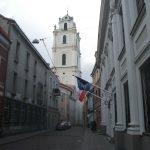
In this street, it was used to be a market place where it meets Pilies street. The first Town Hall is also believed to have stood on this spot Pharmacy house in St. John St. No. 5. Georg Schulz's pharmacy operated in this house since 1639. During the war in 1655, the house was burned down. In 1781, pharmacist Koszyk acquired the ruined building and reconstructed it The Pac estate. Since 1628, the building belonged to the Pac magnate family of the Grand Duchy of Lithuania. In 1783, the dilapidated building was bought, renovated and decorated by the Chancellor of the Grand Duchy of Lithuania - Alexander Michael Sapieha. Currently, the building belongs to the Polish Embassy All photos are copyrighted by Vladislav B. Sotirovic© Vladislav B. Sotirovic 2020
Continue Reading
S. Skapo Street marks the northern limit (right) of the Vilnius University Old CampusA nice perspective view of de Reuss Palace seen from S. Skapo Street (west side) The Lopaciński or Sulistrowski estate in S. Skapo Street. The building got its Classical style according to Martin Knackfuss project. In 1930, the west wing was refurbished as the bishop's house. From 1940, the building housed a music schoolAll photos are copyrighted by Vladislav B. Sotirovic© Vladislav B. Sotirovic 2020
Continue Reading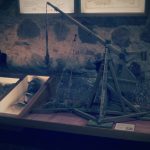
Althought it appears quite large from the outside, the thikness of the tower's walls make it a relatively small exibition space. Its floors hold various items of weaponry and engravings, and models which give an idea of how the site looked and was used in earlier timesThere are models of the three castles from the 14th and early 17th century. They provide an interesting comparison, to show how the site developedThe focal attraction of the museum is the view from the roof, and a narrow staircase leads visitors up to a parapet that overlooks the entire center of the city. This is the best place from which to appreciate the variety of colours of the Old TownAll photos are copyrighted by Vladislav B. Sotirovic© Vladislav B. Sotirovic 2020
Continue ReadingChurch of St. Theresa and the Monastery of the Barefoot Carmelites
The White Hall of the Old Campus of Vilnius University
A Dominican Monastery at the Church of the Holy Spirit
Vilnius Old Town Panoramic View
Church of St. Archangel Raphael
Bursa (Student Dormitory) Courtyard at Vilnius University’s Old Campus
Church of St. Catherine and Former Benedictine Monastery
Sapieha Estate and Park
Astronomic Instruments at the White Hall at Vilnius University
The Church of St. George the Martyr
Dominican Church of the Holy Spirit (Interior)
Bernardinų Street in Vilnius
The Suzin’s Family Mausoleum Chapel
Chapel of St. Casimir (exterior)
Church of the Assumption
The Jewish Street and Gaon Street in the Old Town of Vilnius
The Renaissance Palace Garden in Vilnius
St. John Steet in Vilnius
S. Skapo Street
Vilnius Castle Museum (Western Tower of the Upper Castle)

